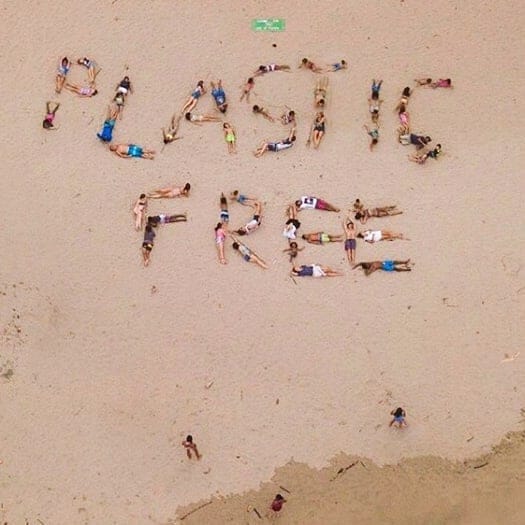5 years ago, I was a regular consumer going about her everyday needs. I had little or no idea of the things I was doing wrong. I thought, if you don’t throw trash on the roads and throw it only in the bins, you are doing your part!
But NO! Being environmentally responsible takes more than just throwing trash in the bins. It’s those small actions that together make a huge impact. Like saying no to plastic bags at grocery stores, not snipping off pieces from plastic packaging (but cutting a line halfway across), carrying a reusable water bottle, and much more!
I can proudly say that I am a changed person now. Doing my bit towards a cleaner and healthier environment!
No one is perfect, and in today’s modern world, it’s almost impossible to completely avoid using plastic. But what we can do is become aware, take note of what we are doing wrong, and try to find alternatives and substitutes as much as we can. For example, buy organic products, say NO to plastic wherever possible, shop from farmer’s markets, and use products made from natural materials. Soon you will find yourself on the path of green and sustainable living.
Let’s introduce you to some of the items that you probably never noticed contained plastic.
15 Items That Have Hidden Plastic
- Dental Floss
Dental floss is typically made from synthetic waxed nylon or Teflon. The mixed materials used in making floss are too difficult to recycle. A study suggests that floss can take up to 80 years to decompose.
- Sanitary Napkins
Regular sanitary pads contain 90% plastic. Even cotton-based tampons have plastic in the applicator and the string. Though more options for biodegradable napkins are being introduced in the market, plastic pads are more commonly used.
- Glitter
Yes, glitter is made of plastic. And since it’s so tiny it is almost impossible to collect them. They pass through water filtration systems and enter oceans. They are generally found on cards, makeup, gift wrappers, and event decor.
- Chewing Gum
Did you know that chewing gum can contain polyethylene and polyvinyl acetate? Till the late 1900s, chewing gum was made from chicle, a natural ingredient found in mesoamerican trees. But since the demand for chewing gum increased, companies started using synthetic materials which are not biodegradable. They mostly end up in the stomachs of animals.
- Produce Stickers
You may try to avoid using plastic, but groceries at supermarkets contain produce stickers made of just that! The produce stickers are non-recyclable or compostable. And because they are very small, they often find their way into water bodies.
- Tetra Packs
You may think that a tetra pack is just cardboard, but it contains a plastic coating inside to prevent leakage, as well as aluminum foil. Therefore, tetra packs are hard to recycle.
- Wet Wipes
On the face of it, wet wipes appear as something that would be easily degradable. But wet wipes contain polyester, and people sometimes flush them down the toilet. They break down into microplastic and enter into the water system.
- Sheet Masks
First of all, the sheet masks are themselves made of nylon or polyester, and to top that, they are often wrapped in individual plastic combined with aluminum foil. Hence, difficult to recycle.
- Tea Bags
This one is a shocker, right? Even tea bags are made of plastic mesh which can release 11.6 billion microplastics and 3.1 billion nano plastics into your cup of tea. Even tea bags made out of paper contain a small amount of plastic which is used to seal them.
- Ribbon
Earlier, a ribbon was made of natural materials like silk or cotton. But since the manufacturing of synthetic fabrics has become so common, it’s hard to find ribbons made of natural materials anymore. So yes, ribbons have plastic.
- Kitchen Sponges
Kitchen sponges are made with polyester or polyurethane and are not degradable and non-recyclable. They find their way into landfills and can take up to hundreds of years to decompose.
- Toothpaste & Face Wash
Products like toothpaste and exfoliating products like face scrub and face wash contain microbeads that are made of plastic. In fact, a study found that more than half of dental care products contain microplastics.
- Receipts
Wait, what? Receipts are supposed to be made of paper right? We hate to break it to you but around 90% of the receipts have a plastic coating on them. This makes them unrecyclable!
- Makeup
A study found that 87% of personal care and cosmetic products contained microplastics and liquid polymer plastics. And we haven’t even talked about their packaging yet (which is mostly plastic).
- Tape
Most tapes are made with plastic elements, just like that clear office tape. Traditional plastic adhesive tapes can contain PVC or polypropylene and are not recyclable.
Final Words
Were you surprised to see some of the items made to the list? Well, I was too, when I first read about them. Well, we can only take individual and small steps and hope that people around us change too.
So, why not make your family members read this article today? And help spread awareness!






